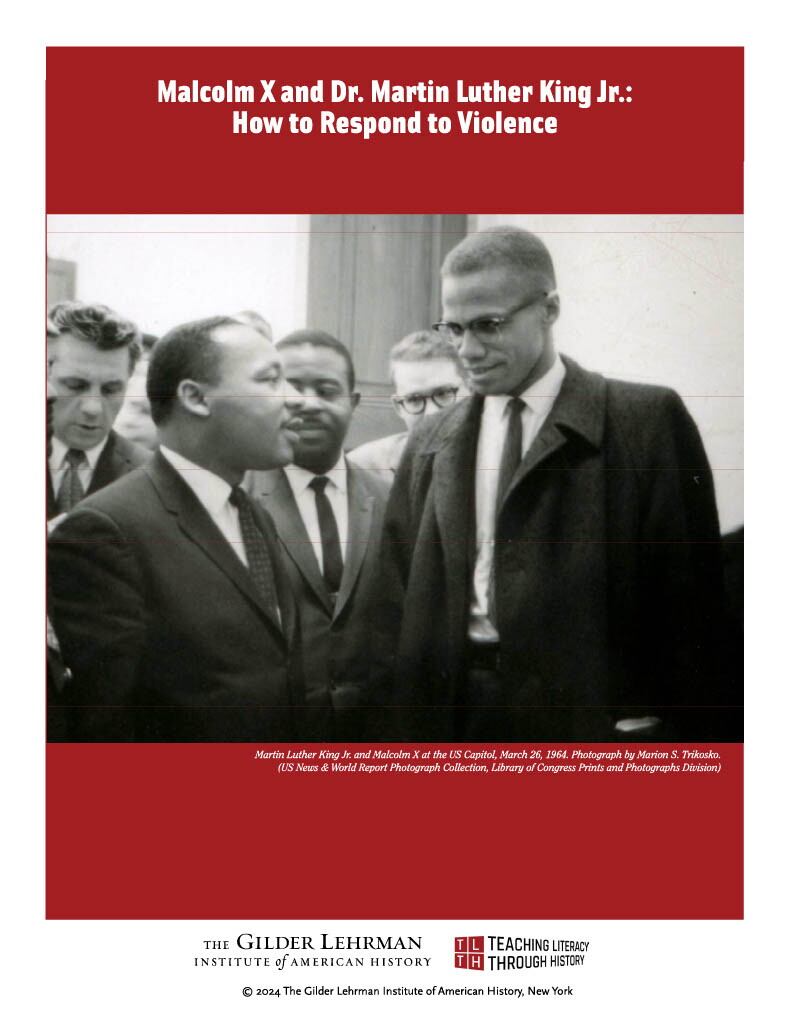Lesson by Tim Bailey
Essay by Traci Parker, University of California, Davis
Grade Level: 7–12
Number of Class Periods: 3
Primary Era: 1945 to the Present

Over the course of three lessons the students will compare and contrast Malcolm X’s and Dr. Martin Luther King Jr.’s suggestions for how civil rights advocates should respond to violence directed against them. Should they engage non-violently so as to clarify the brutality of police or mob oppression for a potentially sympathetic audience? Or should they exercise their constitutionally protected right of self-defense? Comparisons will be drawn between two speeches written by these men.
Lesson Plan Author: Tim Bailey
Historical Background Essay by: Traci Parker, University of California, Davis
CCSS.ELA-LITERACY.RH.9-10.9: Compare and contrast treatments of the same topic in several primary and secondary sources.
CCSS.ELA-LITERACY.RH.11-12.2: Determine the central ideas or information of a primary or secondary source; provide an accurate summary that makes clear the relationships among the key details and ideas.
CCSS.ELA-LITERACY.RH.11-12.2: Determine the central ideas or information of a primary or secondary source; provide an accurate summary that makes clear the relationships among the key details and ideas.
CCSS.ELA-LITERACY.SL.11-12.3: Evaluate a speaker’s point of view, reasoning, and use of evidence and rhetoric, assessing the stance, premises, links among ideas, word choice, points of emphasis, and tone used.
CCSS.ELA-LITERACY.W.11-12.1: Write arguments to support claims in an analysis of substantive topics or texts, using valid reasoning and relevant and sufficient evidence.
What did Malcolm X contend was a reasonable and legal response for a person whose body or property was threatened?
What did Martin Luther King Jr. contend were the benefits of remaining nonviolent even when attacked?
How did Malcolm X and Martin Luther King Jr. explain why the Civil Rights Movement was needed?
What common ground existed between Malcolm X and Martin Luther King Jr?
Malcolm X, "The Ballot or the Bullet," April 3, 1964, Cleveland, Ohio, from Speeches on Social Justice
Martin Luther King Jr., “Nonviolence: The Only Road to Freedom,” May 4, 1966, Ebony (October 1966)